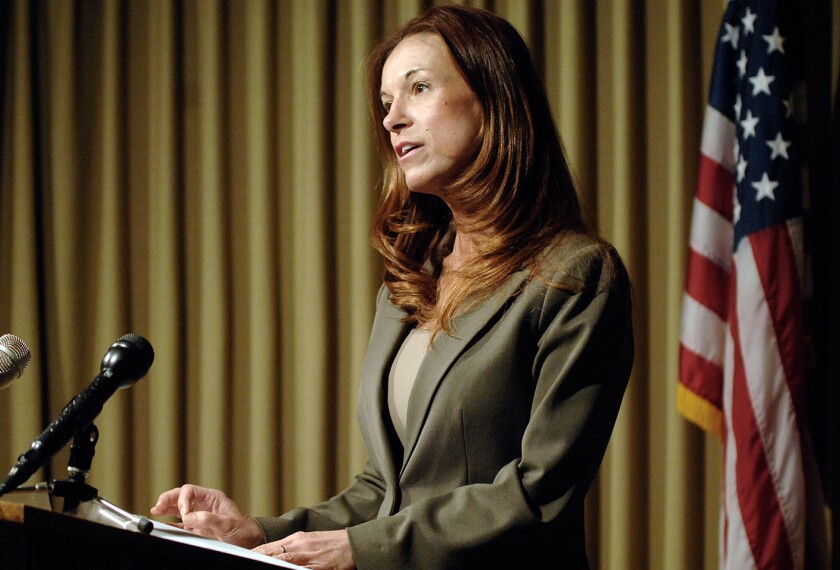Shorter COVID-19 quarantine periods, as the Centers for Disease Control and Prevention now recommends, could ease some of the burdens that have made in-person learning difficult for schools, but challenges remain.
The , announced Wednesday, would allow for close contacts of people diagnosed with the virus to resume normal activity after 10 days if they don’t show symptoms, or as little as seven days if they test negative.
The ideal quarantine period is still 14 days, but federal health officials hope that offering shorter options will encourage more people to cooperate by reducing the burden of being away from work and school for extended periods, they told reporters on a conference call.
But whether or not to adopt the new recommendations is still a decision for local health authorities, CDC officials said, and potentially exposed people should still continue to monitor themselves for symptoms for the full 14-day period, even after they return to daily activities.
The new recommendations come as case rates and hospitalizations reach new records around the country. Some schools have been forced to return to remote learning because they couldn’t locate enough substitutes to cover teacher quarantines.
“In a situation where cases are rising, that means that the number of contacts are rising, and the number of people who require quarantine is rising,” said Dr. John Brooks, the chief medical officer for the CDC’s coronvirus response. “That’s a lot of burden, not just on the people who have to quarantine, but also on public health. We believe that if we can reduce the burden a little bit, accepting that it comes at a small cost, we make greater compliance overall.”
Striking a Balance
The CDC urges quarantines for any close contact of a person with COVID-19. People frequently transmit the virus unknowingly before they have symptoms, and it may take some time for the level of virus in a body to reach the level that it is detectable on a test, epidemiologists say. Quarantines are meant to address this concern, reducing the likelihood of spread in a community.
But public health officials around the country have reported difficulty in contact tracing, at times because members of the public are uncooperative with investigators. CDC officials hope that people may be more willing to report contacts if they know they will face less time at home because of the potential exposure. The agency says the shorter quarantine windows come with a minor increase in risk— as little as a 1 to 5 percent increase in likelihood of transmission after leaving quarantine—but increased compliance may make the tradeoff worth it.
The CDC defines a close contact as anyone who was within six feet of someone infected for a total of 15 minutes over the course of 24 hours. It updated that rule—clarifying that it’s 15 cumulative minutes, rather than 15 consecutive minutes—in October after some schools required students to shuffle around every 10-14 minutes to avoided being counted.
That so-called “COVID shuffle” is just one sign of the burdens quarantines have placed on schools. In a November survey conducted by the Education Week Research Center, nearly three-quarters of responding school and district leaders reported that their need for substitute teachers has increased, as applications for the positions have gone down. That need is at least in part because of the need to quarantine teachers and staff.
And overall community compliance with quarantines matters for schools, too, said Noelle Ellerson Ng, the associate executive director of AASA, the School Superintendents Association. That’s because a school’s ability to return to in-person learning and keep its doors open often depends on indicators like viral spread in a region.
“This seems like a policy premised on a balance of science and common sense to really try to be pragmatic of addressing the multiple realities,” Ellerson Ng said of the new CDC guidance.
Hurdles Remain
But some hurdles may remain in adopting the shorter schedule, particularly seven-day quarantines that rely on a negative test result.
For one thing, states have reported and related supplies, like swabs. And, as virus rates and testing related to holiday travel increase, they may struggle to keep up with demand.
Health officials have also reported longer wait times for test results, which may make it less feasible to use a test to shorten a quarantine window. CDC officials said Wednesday that either a rapid test or a traditional lab test may be used to qualify for a seven-day quarantine. But the test must be conducted no more than 48 hours before the end of that seven-day window. And, in some areas, testing delays are much longer than two days.
Some districts have already stepped up testing in their schools. They have relied in part on a federal supply of 100 million rapid antigen tests, which provide results in less than 15 minutes without lab equipment. But those tests, shipped to governors to use at their discretion, are limited, and there may not be enough to meet the full demand, public health officials have said.
CDC officials acknowledged those challenges to reporters Wednesday. In cases where testing supplies are limited, local officials may opt for longer quarantine periods, said Henry Walke, the CDC incident manager for the coronavirus.
Separately Wednesday, CDC Director Robert Redfield said the agency would soon release additional guidance on mass surveillance testing, which could be used to monitor for potential spread in businesses and schools.






